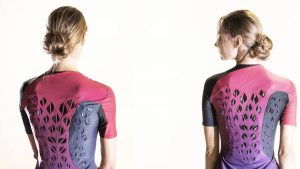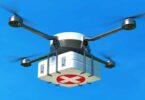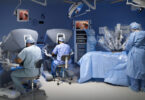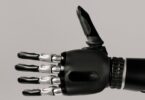Bioelectronics is related to other sciences mainly biology, hence its name, which mainly tries to develop instruments that help in the detection of diseases and thus improve the quality of life of people.
In the bioelectronics, microchips or intelligent integrated circuits are developed capable of receiving, processing and sending data. These microchips have become the fundamental part of medical instruments so that they work correctly according to the needs.
The microchips under the skin have become one of the futuristic applications of Bioelectronics, but nowadays this is already used as a form of identification.
A person is implanted the chip inside their body, they carry the basic information of the person, as well as a medical history, when the person passes through a scanner this detects the chip inside and gives a full report of the state of the person. These microchips can be implanted in people who suffer from a disease related to their memory.
These microchips also have the ability to be detected via satellite by a mobile device, computer or radar and immediately know the exact place where that person who has implanted the chip.
In the future, this technology can be used in prisons around the world as a form of identification and for all the security measures that could be implemented.
Similarly, implants refer to devices created by man in order to supplant any damaged organ inside the human body, these devices would have the ability to perform the same functions as an organ perform or improve its performance either using biological structures created by man and that are assimilated to the biological structures of the human body, these structures could be controlled by microchips and these in turn controlled by electrical impulses produced by muscles of the body.
The bioelectronic medicine is considered today, a new field of application in the medicine of the future, with the creation on the part of researchers of the Northwestern University and of the School of Medicine of the University of Washington, in the United States, of a very tiny device that can be implanted, wireless and most importantly, biodegradable. It will serve to accelerate the regeneration and healing of damaged nerves. It works by sending electrical pulses to nerves that have undergone surgical procedures for healing. The result is that it accelerates the growth of the nerves, the recovery of muscle strength and their ability to control movements.
The device has not been tested in humans, it was applied to the recovery of damaged peripheral nerves. The results showed that there was an acceleration in the regrowth of the nerves in the operated legs of the mice and the consequent muscular strengthening.
The device measures less than one centimeter, is as thin as a sheet of paper and works for a couple of weeks before being absorbed by the body.
Although the device has not been tested in humans, the findings are promising as a future alternative for patients with nerve damage.
 The scientists designed and manufactured that thin, flexible device that wraps around a wounded nerve and sends electrical impulses at programmed times during the days of recovery. It is powered and controlled by a wireless transmitter that is placed outside the body, much like a charging base for a cell phone.
The scientists designed and manufactured that thin, flexible device that wraps around a wounded nerve and sends electrical impulses at programmed times during the days of recovery. It is powered and controlled by a wireless transmitter that is placed outside the body, much like a charging base for a cell phone.
Researchers at the University of Washington studied the functioning of the bioelectronic apparatus in mice with damage to the sciatic nerves.
They found that the more electrical stimulation was received, the faster and better recovery in nerve signaling and muscle strength. No adverse biological effects of the device or its resorption were found.
The design of the device is made to disappear. This idea of transient, short-lived electronic devices has been a matter of great interest. This study demonstrated that the device can also work as a temporary pacemaker and as an interface between the spine and other sites of stimulation throughout the body. It follows then, a broad utility well beyond just the peripheral nervous system.
These and other innovations are also possible in Pharmamedic.








